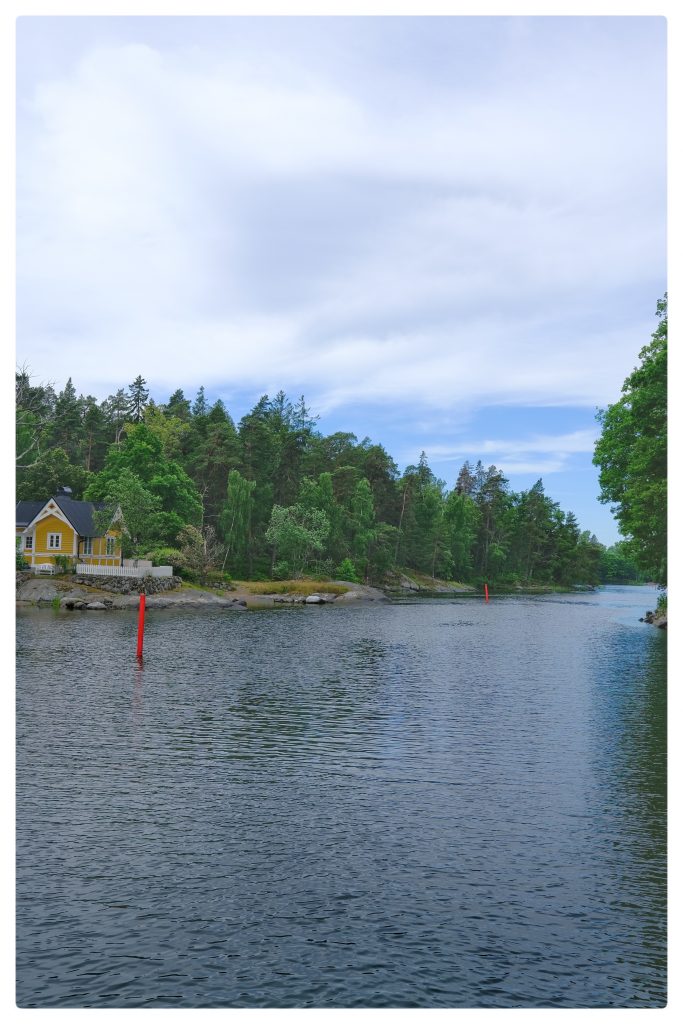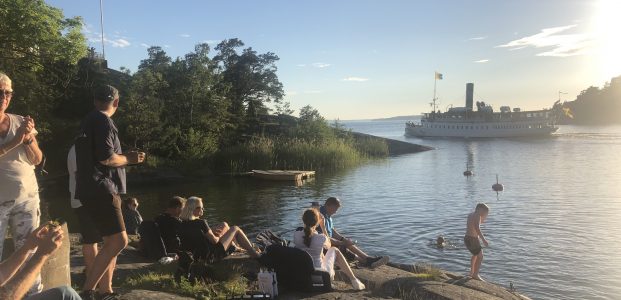Boo is possibly one of the best named Swedish towns. It is sometimes referred to as Saltsjö-Boo, but somehow Boo seems much better. It also seems very appropriate given that Boo is at the start of the Baggensstäket. This is a very narrow channel and as you go through the narrower parts you fully expect boats to appear coming the other way going ‘boo’. The Baggensstäket is the main way into Stockholm from the south and has been used since at least the 13th Century. In fact it was probably the main way into Stockholm until isostatic rebound (basically the ground bouncing back upwards after being compressed by glaciers in the ice age) made it shallower. This was probably not helped either by the waterway being filled by rubble to help control access during various conflicts between 1518 and 1520. After the Swedish War of Liberation (1521-23) King Gustav Vasa ordered it cleared again. When Gustav Vasa died in 1560, his son Erik became king. This was clearly a popular royal name as he was Erik XIV. He ordered a customs post to be established at Vaxholm (the northern route into Stockholm) and so all foreign ships were inspected there and had to pay taxes. The response to that by many ship owners was predictable. They transferred their cargoes to smaller ships and smuggled them in through the Baggensstäket! So, in 1602, a customs staion was established in the Baggensstäket as well. It was placed at the narrowest point and is named Knapens hål (“Knaap’s hole”) after one of the first customs officials, Olof Knaap. It is always good to be remembered in posterity though being known for a ‘hole’ may not be the best memorial ….
In 1705 the architect Nicodemus Tessin the Younger deepened the Baggensstäket to a depth of eight Swedish feet (this is apparently 0.974 English feet). In return for doing the work he was granted the right to collect a ‘boom fee’. This was literally a boom stuck across the waterway at a specific depth. If your draft meant you would hit the boom, you had to pay a fee for the boom to be lifted; sounds like an early form of the Private Finance Initiative! Five years later though they had an unexpected visitor through the Baggensstäket – the plague. A boat from Estonia had the plague on board and when the captain died at a local inn, the plague gained a foothold in the country.
We got to the entrance moderately early and were relieved to get through meeting scarcely any boats. Meeting a ferry through the narrower sections would be a ‘trouser-changing moment’.

From the Baggensstäket we headed on through the Skurusundet towards the main entrance to Stockholm. On the way we stopped at a barge for an ice-cream. Coincidentally they sold fuel, so we filled up with fuel as well, but the main priority was the ice cream. Once at the main Stockholm entrance, instead of turning left into town, we turned right towards Vaxholm. We headed past Vaxholm and finally managed to get the sails out for an hour or so to our final destination – Ekholmen. A total trip of 20 miles.
Ekholmen is a private island owned the Vikingarnas Sailing Club (Vikingarnas Segel Sällskap). They have a base on Djurgården in Stockholm, but since 1930 they have also owned the island of Ekholmen and they generously allow visitors. We arrived the evening before midsummer and they were incredibly welcoming. They tried to persuade us to stay another night and join in with what they described as the best midsummer party in Stockholm. Sadly we had other plans, but judging from their preparations, I suspect they may well be right …..
That evening we were also invited to take part in a club tradition. When the evening ferry (one of the traditional Stockholm ferry boats) drops off at the next door island, they go past the top of Ekholmen and sound their horn. The response to this from club members lined up on the shore is to respond as loudly as possible using anything which will make a noise; saucepans, foghorns and on this occasion – a flugel horn. The more noise the club members make, the more noise the ferry makes. The sight of people on board the ferry banging chairs and shouting was really quite bizarre, but very memorable. The ferry then sailed off into the sun …..


